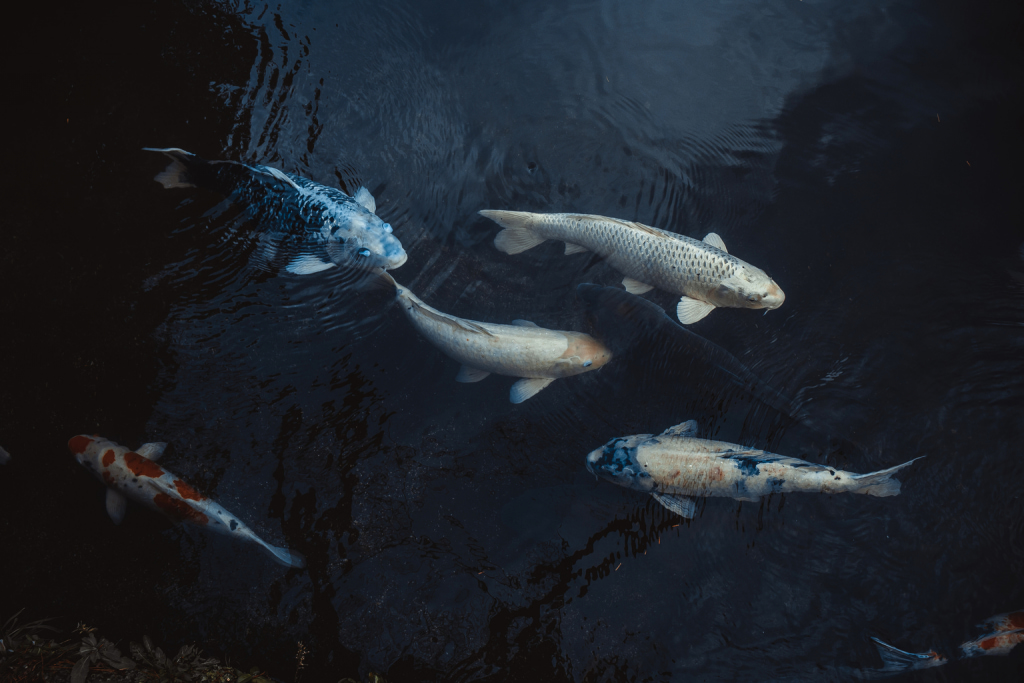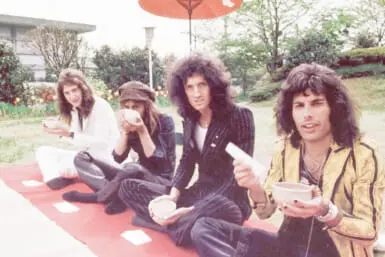Frequently found navigating shallow waterways at shrines, temples and in elegant Japanese gardens or adorning traditional artworks, ornamentally-bred koi fish have long been a staple of sophisticated decoration and sentimentality. While we see them often, many of us go through life not knowing the true meaning and history behind these beautiful fish. Much work goes into breeding and raising them, with only a few of those spawned considered beautiful enough to sell.
Humble Beginnings
The word koi originally referred to the common carp, a species of fish that arrived in Japan from China around 1,000 years ago. Suited to the lush and cool climate of Niigata, rice farmers kept koi in their terraced hillside ponds as a source of food, while their droppings served as a natural fertilizer for the rice plants. Over the years, spontaneous genetic mutations resulted in the emergence of brilliant colors and patterns on their scales. Farmers began to selectively breed koi in order to produce more beautiful designs. Koi bred purely for decorative purposes are known as nishikigoi, which literally translates to brocaded carp.
An isolated inter-mountainous group of villages in Niigata, located in modern-day Nagaoka and Ojiya, is known as the birthplace of nishikigoi. This is where koi were first carefully selected and bred to exhibit the wide range of patterns and color variations they do today. Through this meticulous breeding process, nishikigoi also became known for their size and extraordinary lifespan, with some living up to 40 years. The oldest recorded koi, called Hanako, died at 226 years of age.
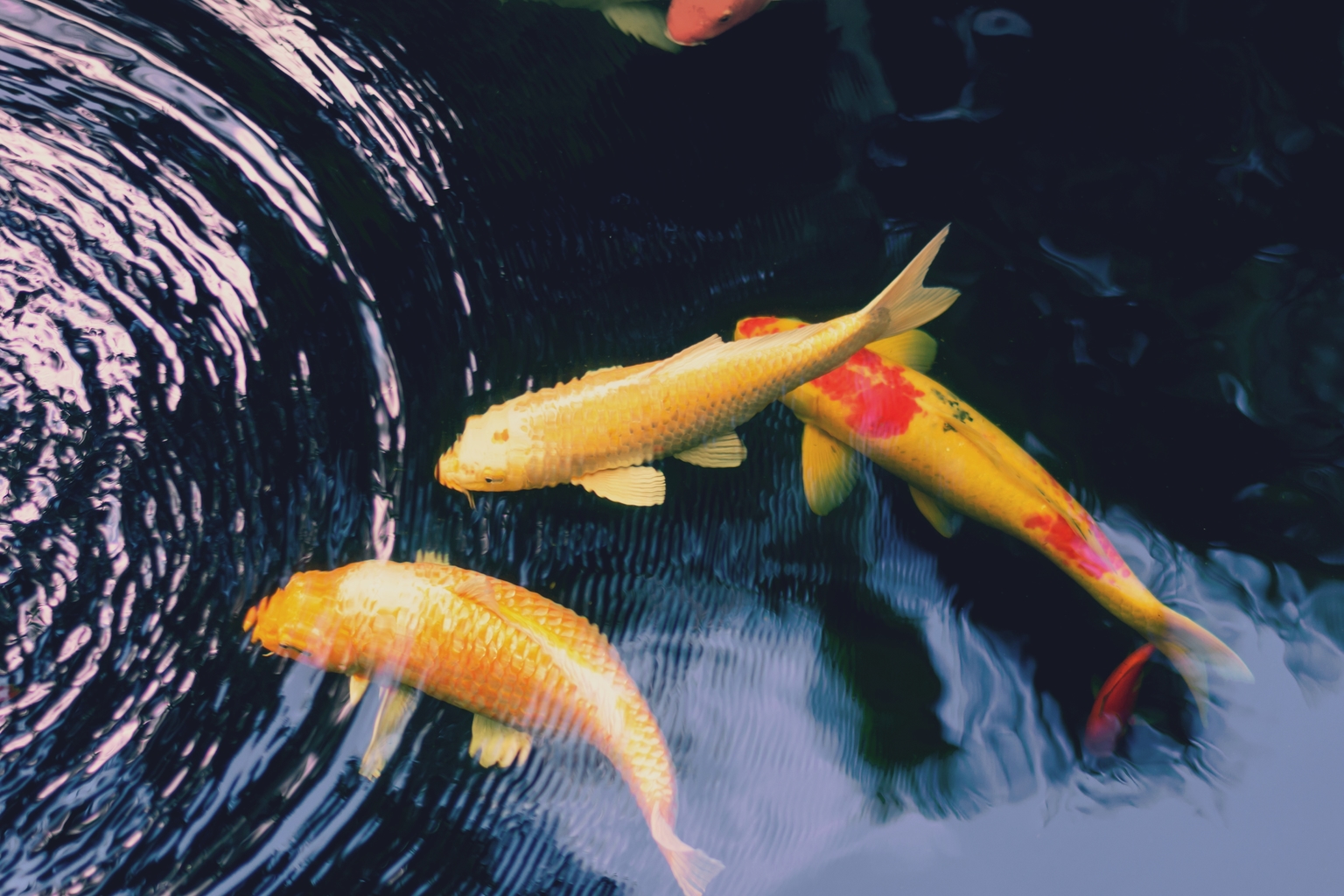
Koi Goes Global
Nishikigoi received worldwide attention at the 1914 Tokyo Taisho Exhibition, held in Ueno Park. A total of 23 koi were exhibited here, attracting the attention of Crown Prince Hirohito. Nishikigoi’s popularity soared around the world, resulting in an explosive growth of koi hobbyists and overseas exports. In 2020, the export value of nishikigoi was approximately ¥2.5 billion, making it Niigata Prefecture’s largest export item.
Today, in Nagaoka and Ojiya, you will find the finest carp breeders in Japan, where mineral-rich and high-quality soil creates ideal growth conditions. Koi breeding is a complex, time-consuming and sophisticated science. During the spawning season, from April to early July, breeders carefully select the perfect combination of mating koi based on lineage, physical traits, color and body shape. From the spawn, just a small percentage will have the traits desired for sale.
The breeding process itself is fraught with challenges. The bright colors and patterns of koi are their greatest natural weakness, making them easy prey. The water must also maintain an appropriate temperature, pH values must be checked regularly, and parasites must be kept at bay with strict sanitation controls. Many people don’t realize the extraordinary levels of dedication that go into the art of koi.
Hawaii-based Kodama Koi Farm is the largest importer and distributor of Niigata nishikigoi in the United States. Second generation company president, Taro Kodama, emphasizes the importance of finding a good, reliable distributor that understands the extent of maintenance involved. “Koi is a living creature and must be cared for properly. One sick koi can ruin the whole pond,” he says.
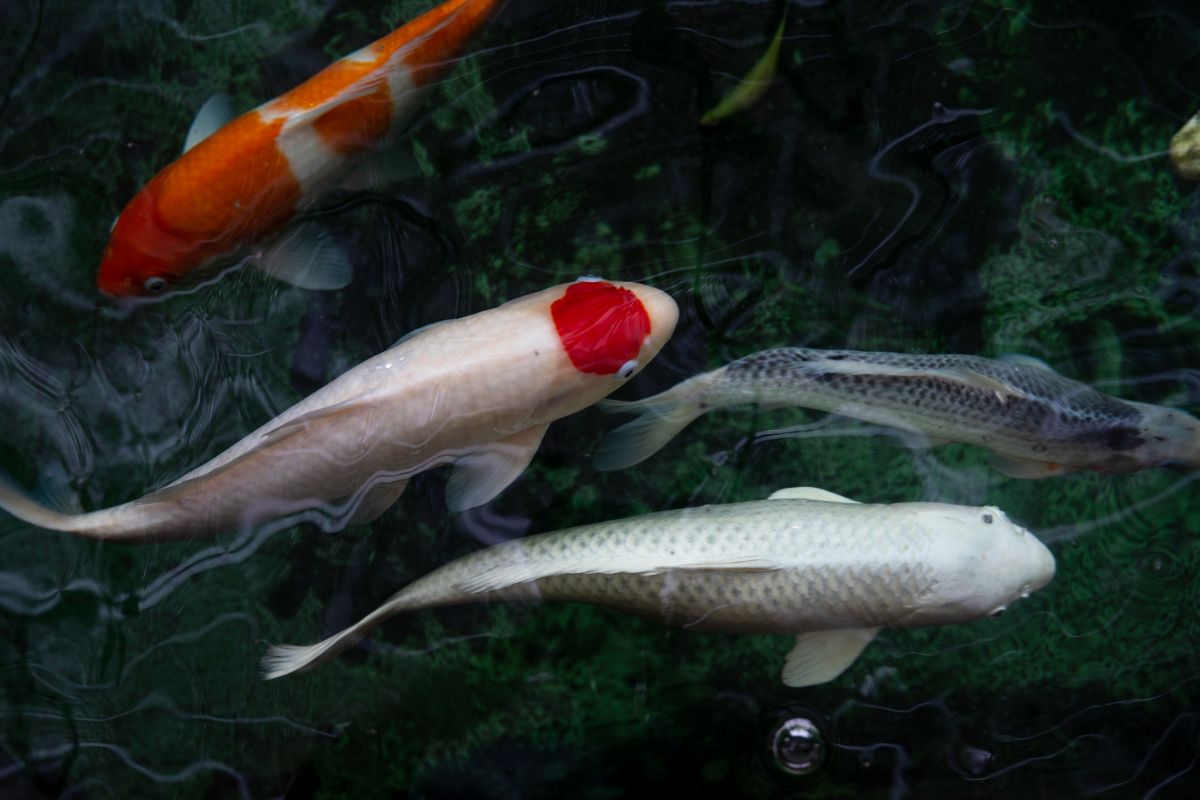
Swimming Jewels
Over the past two centuries around 100 varieties of koi have been developed, distinguished by their colors, patterns and scales. The three most popular varieties are known as the Gosanke, or the “Big Three” in English. Of these, the kohaku is recognized by its white scales accompanied by splashes of red. The second variety, Taisho sanshoku, is similar to kohaku but has additional black markings. Lastly, the Showa sanshoku is similar to the taisho sanshoku but has black as the predominant base color, with red and white as overlaying patterns. Other popular varieties include tansho, which are all-white with a red circle on the back, reminiscent of the Japanese flag. Ogon are metallic gold, and asagi koi have an unusual scale variation that resembles netting.
Around the world, hobbyists and serious devotees to the craft showcase their highest-quality koi in competitions for the chance to be declared grand champion. The owners and breeders of winning fish not only receive prestigious titles and the associated honor and reputation, but victory can be also lucrative. In 2018, the 2017 All Japan Koi Show grand champion, a three-foot koi named S Legend, sold for ¥203 million to a buyer in Taiwan.
Celebrity koi ownership has further contributed to worldwide fascination for this fish, with prominent people like Shaquille O’Neal, Meghan Markle, Prince Harry, Tommy Lee and Matt Damon being reported koi aficionado. One of the most famous koi collectors was Freddie Mercury, whose Kensington residence featured an elaborate Japanese garden and a pond filled with almost 90 koi.
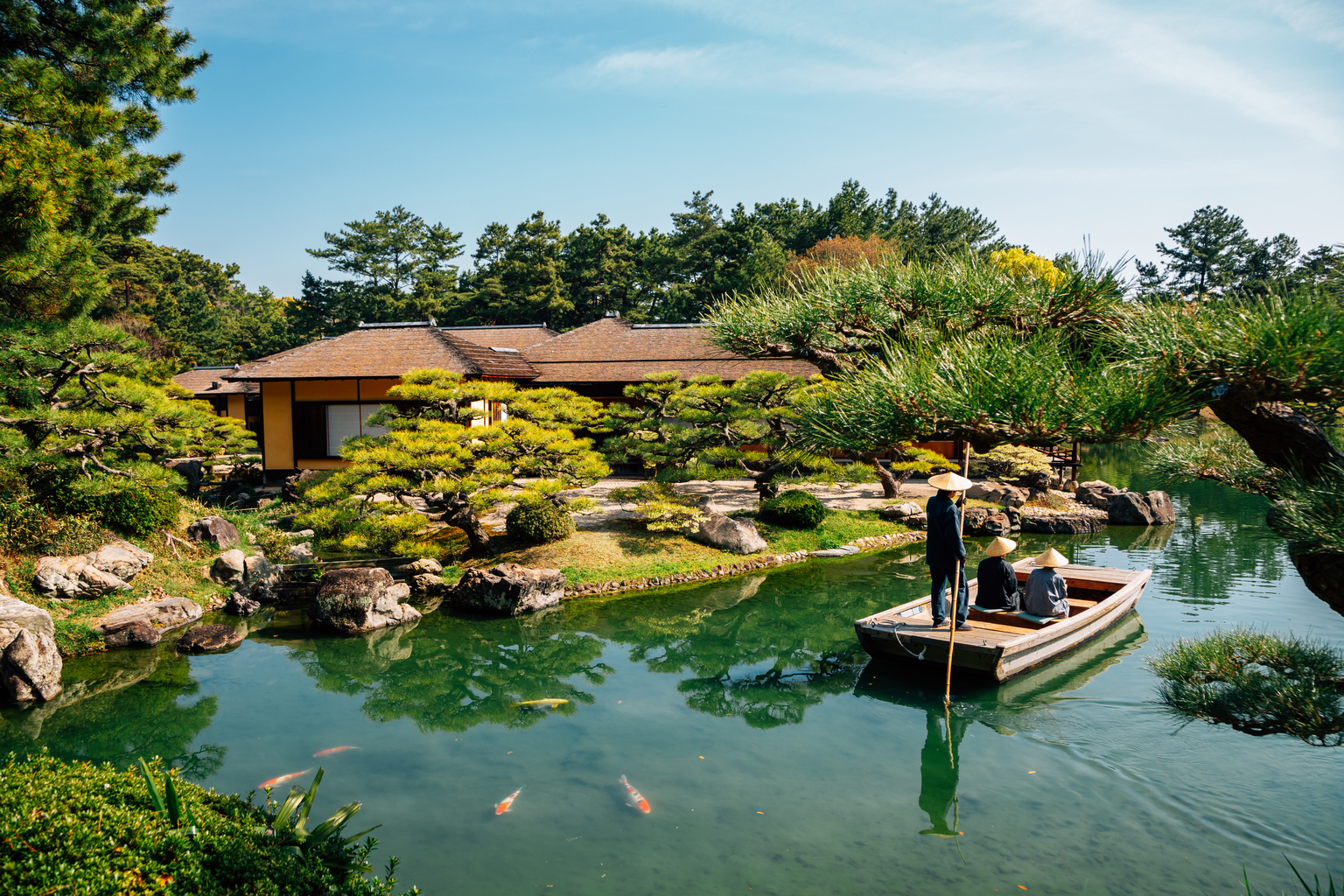
A Symbol of Japan
The humble koi is easy to find in art, history and culture around Japan. There are many ancient folk tales of koi swimming against strong currents and even climbing waterfalls, symbolizing strength and success through perseverance. Each year, Children’s Day is celebrated by displaying colorful koi streamers, a custom that is said to have started in the Edo Period by samurai warriors to honor their sons. Spirited, energetic, healthy and determined, the koi fish represent the best qualities that parents wish for in their children.
Since koi do not generally display territorial tendencies, they are also considered a global symbol of peace and harmony. Kodama says, “They are the same species and come in many different colors, but they do not fight. I wonder why humans fight. We have different skin colors and we speak different languages but we are all human. I think this is something we can learn from koi.”
The Japanese koi is so much more than just a fish. It’s an undeniable representation of the beauty that exists in all things, only needing the right circumstances and care to become something exceptional. So, the next time you spot a koi in a temple pond, you’ll now be able to appreciate their striking beauty more fully and see them as a message of strength, perseverance and hope.
Curious About Koi? Head to Ojiya Nishikigoi no Sato to learn more. This open-air aquarium dedicated to nishikigoi features an expansive Japanese garden, a museum and both indoor and outdoor ponds where visitors can see these living artworks in action.

